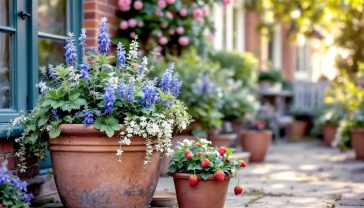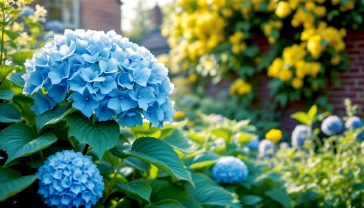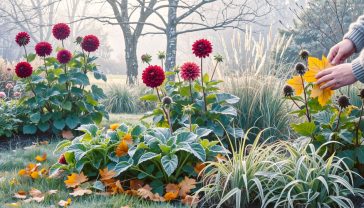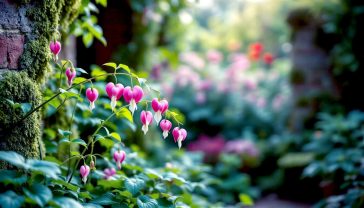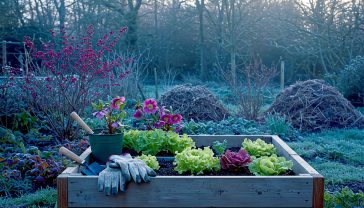10 Fantastic Plants, Shrubs & Trees Beginning with ‘I’
Your definitive guide to the best plants, shrubs, and trees starting with ‘I’. Explore top choices for UK gardens, from iconic Holly to stunning Iris.
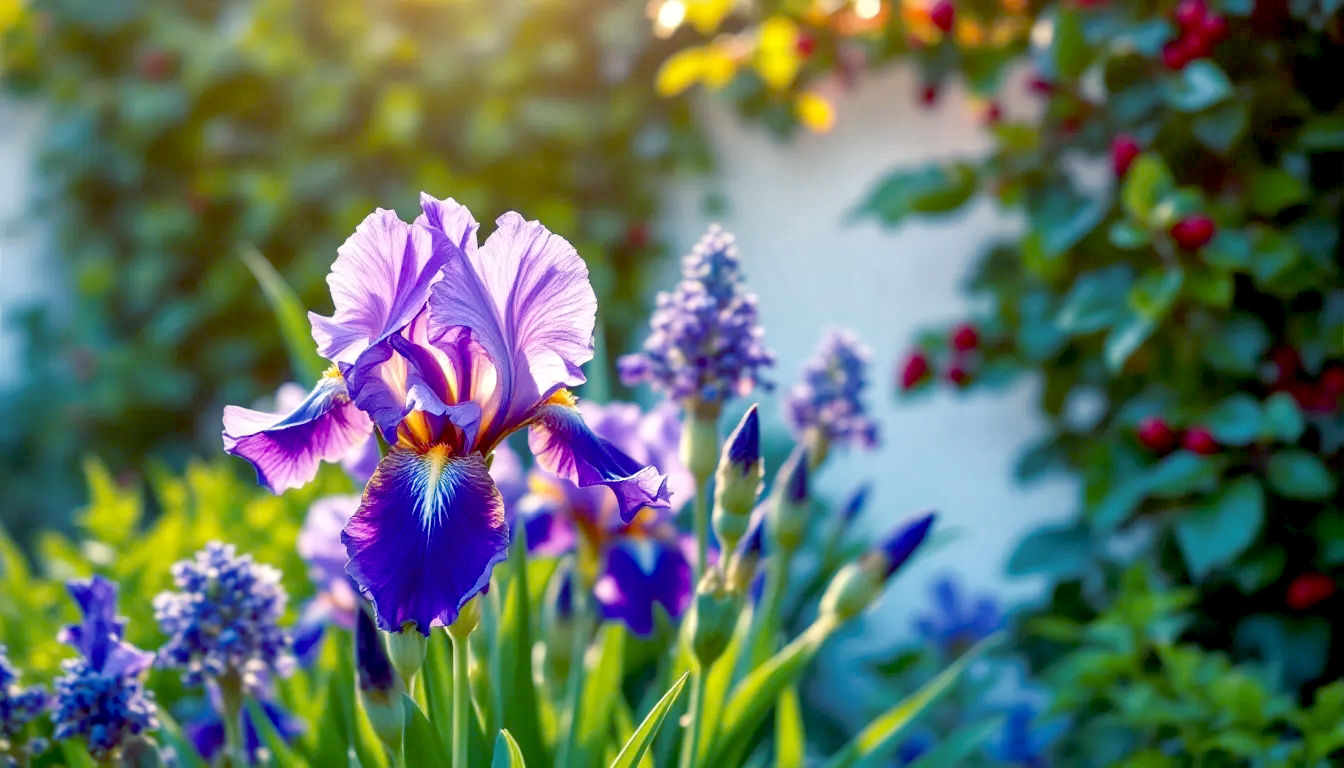
This post may contain affiliate links. If you make a purchase through these links, we may earn a commission at no additional cost to you.
Ever been stumped in a pub quiz or a game of I Spy by the letter ‘I’? When it comes to the garden, you’d be forgiven for thinking it’s a tricky one. But look a bit closer, and you’ll find a whole world of incredible plants, shrubs, and even trees starting with this often-overlooked initial. From the bold and beautiful Iris that brightens up our ponds to the cheerful, sky-blue trumpets of Morning Glory, the letter ‘I’ gives us some of Britain’s most cherished garden stars.
Whether you’re a seasoned gardener with muddy knees or just starting out with a few pots on the patio, there’s an ‘I’ plant for you. We’re going to dig into ten fantastic choices you can grow right here in the UK. We’ll cover everything from how to spot them and where to plant them, to a bit of the fascinating history behind them. So, grab a cuppa, and let’s get to know these intriguing plants.
1. Italian Arum (Arum italicum)
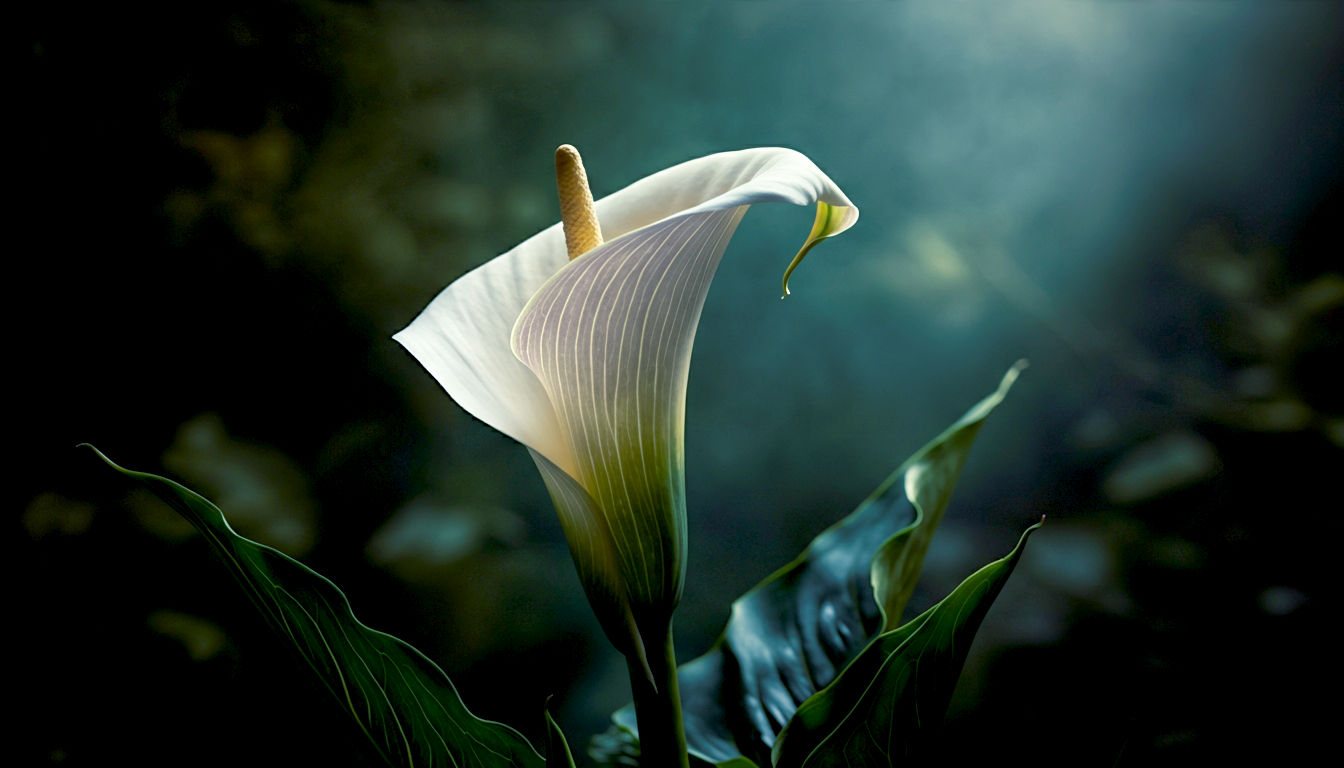
What is it?
This is a truly fascinating plant that performs its magic trick in reverse. While other plants are dying back for winter, Italian Arum (Arum italicum) springs to life. In autumn, it sends up beautiful, arrow-shaped, glossy green leaves marked with elegant, creamy-white veins. These look stunning all winter, even in the frost. In spring, it produces a strange, hooded flower (a ‘spathe’), but the real show comes in late summer when the leaves have vanished, leaving behind a dense club of brilliant, shiny red berries. A word of caution: all parts of this plant are poisonous and can irritate the skin.
A Bit of History and a British Connection
Italian Arum has been grown in British gardens for centuries, particularly in the grounds of old stately homes and vicarages where it adds invaluable winter interest. It enjoys our mild, damp winters and has “jumped the garden wall” to become naturalised in woodlands in some parts of the UK. It’s a plant that speaks of history and provides a surprising splash of colour when the garden is at its barest.
How to Spot It
- Leaves: Look for the distinctive, beautifully marbled, arrow-shaped leaves in shady spots during autumn and winter. They are unmistakable.
- Flowers: The flower, which appears in spring, is a pale greenish-cream hood surrounding a central yellow spike. It’s quite subtle and often hidden by the leaves.
- Berries: In late summer, look for the upright, 20-30cm tall spike packed with bright, glossy red or orange berries, standing starkly on its own after the leaves have died away.
Growing in Your British Garden
Italian Arum is perfect for bringing life to a shady corner of the garden.
- Position: It thrives in partial to full shade, making it ideal for a woodland garden or for planting underneath large shrubs and trees.
- Soil: It loves moist, humus-rich soil. Adding leaf mould when planting is a great idea.
- Habit: It grows from tubers and will slowly spread to form an impressive clump. Plant it where it has space to naturalise. Just remember to wear gloves when handling it.
2. Iris
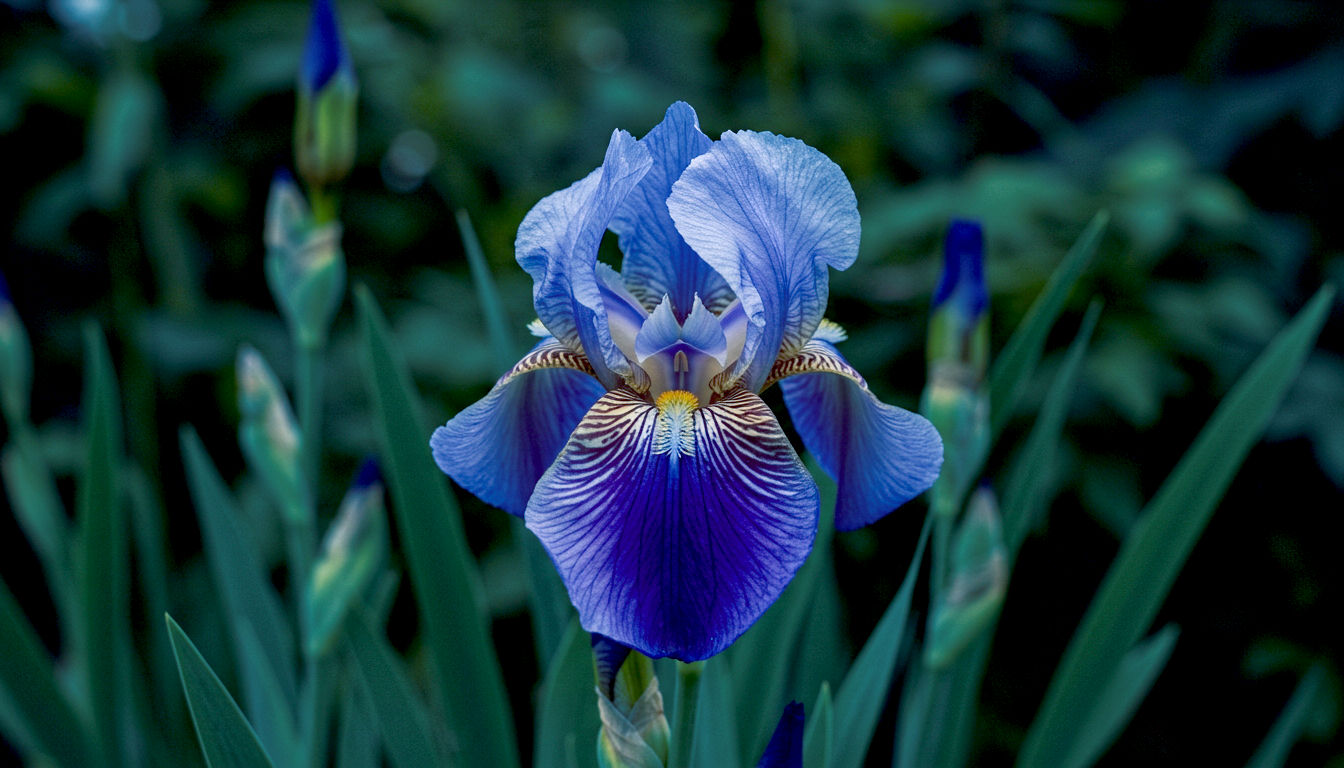
What is it?
The Iris is a showstopper. Named after the Greek goddess of the rainbow, these plants produce some of the most stunning and colourful flowers you’ll ever see. There are hundreds of types, from the tall, elegant Bearded Iris (Iris germanica) that loves a sunny border, to our very own native Yellow Flag Iris (Iris pseudacorus) that thrives in damp, boggy ground.
A Bit of History and a British Connection
The Iris has been admired for centuries. The stylised version of the flower, the fleur-de-lis, has been a symbol of French royalty for ages. Here in Britain, the Yellow Flag Iris is a common sight along our canals, riverbanks, and in marshy fields. Its bright yellow flowers were historically used to make a yellow dye for fabrics, and the roots were used to make a black ink. It’s a true native beauty that supports a lot of our local wildlife.
How to Spot It
- Leaves: Irises have very distinct leaves. They are long, flat, and sword-shaped, growing up from the base of the plant in a fan-like shape.
- Flowers: This is where they really shine. An Iris flower has a complex structure with three large, drooping outer petals called ‘falls’ and three smaller, upright inner petals called ‘standards’. They come in almost every colour imaginable, from deep purples and blues to bright yellows and pure whites.
Growing in Your British Garden
Growing Irises is all about picking the right type for the right spot.
- Bearded Iris: These need sun, sun, and more sun. Plant their sausage-like roots (called rhizomes) in a well-drained spot where the top of the rhizome can bake in the summer sun. Don’t bury it too deep or it won’t flower.
- Siberian Iris (Iris sibirica): These are much easier going. They form grassy clumps and are happy in normal garden soil in sun or light shade.
- Flag Iris (Iris pseudacorus): If you have a pond or a boggy, damp patch in your garden, this is the one for you. It loves having wet feet and will thrive in conditions where other plants would rot.
3. Ivy (Hedera helix)
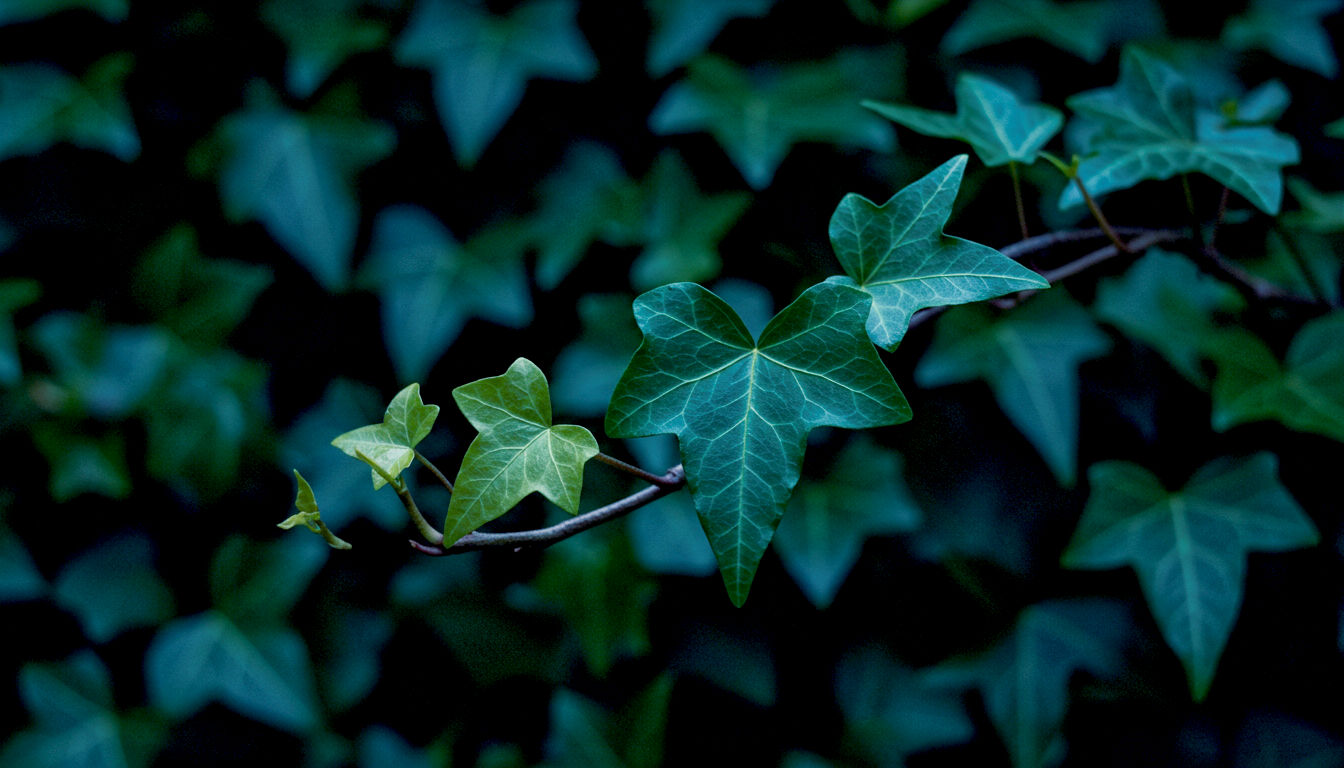
What is it?
Ah, Ivy. Some gardeners love it, others can’t stand it. Common Ivy (Hedera helix) is a native, woody, evergreen climber. It’s a master of survival, able to climb up walls, trees, and fences using tiny little aerial rootlets that grip onto surfaces. It can also creep along the ground, forming a dense, leafy carpet.
A Bit of History and a British Connection
Ivy is another plant with deep roots in British culture. Like Holly, it was seen as a symbol of everlasting life and was brought indoors during winter. The Christmas carol “The Holly and the Ivy” shows just how closely linked these two plants are in our traditions. In pubs, a bunch of ivy hanging outside used to be a sign that wine was sold there, a tradition dating back to the Romans.
How to Spot It
- Leaves: Ivy has two types of leaves. On the climbing, non-flowering stems, the leaves are the classic three-to-five-lobed shape we all recognise. On the mature, flowering stems that grow out into the light, the leaves are a simpler, unlobed oval or heart shape.
- Flowers: Many people don’t even notice Ivy flowers. They appear in autumn as small, greenish-yellow globes. They’re not pretty, but they provide a crucial late-season source of nectar for bees, hoverflies, and wasps.
- Berries: After flowering, Ivy produces clusters of dark purple or black berries that ripen over winter. They are a lifeline for birds in the cold months when other food is scarce.
Growing in Your British Garden
Ivy gets a bad rap. People worry it will damage trees or pull down walls. On a healthy tree, Ivy does no harm—it just uses the trunk for support and doesn’t steal nutrients. On an old, crumbly wall, its roots might cause issues, but on a sound wall, it can actually offer protection from the weather.
- Uses: It’s brilliant for wildlife, providing shelter for birds and insects. It’s a great choice for covering an ugly fence or a shady wall where nothing else will grow.
- Control: It can be vigorous. If you don’t want it taking over, you just need to give it a good trim with shears once a year in late spring. There are also many less-aggressive, decorative varieties with beautiful silver or gold variegated leaves.
4. Impatiens (Busy Lizzie)
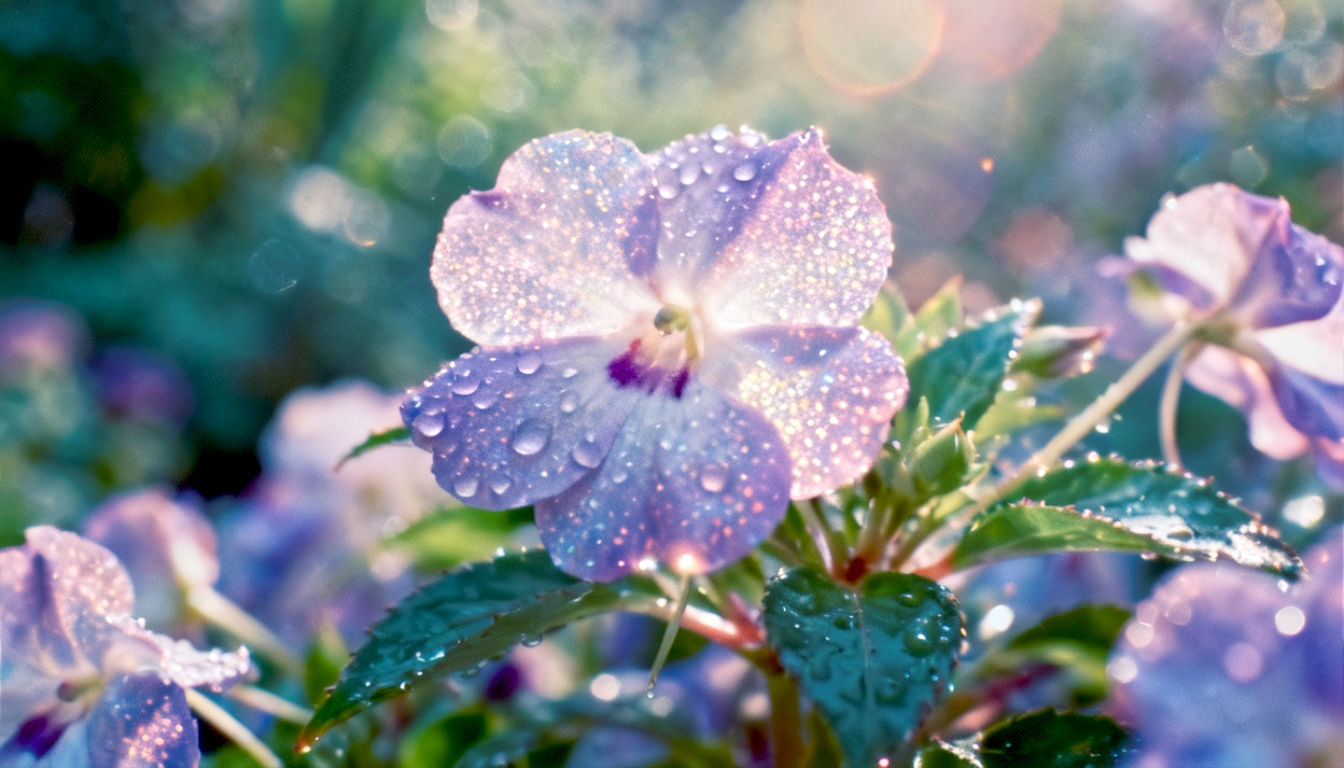
What is it?
If you’ve ever seen a British park or pub garden in summer, you’ve seen Impatiens, or as we affectionately call them, Busy Lizzies. These are cheerful, non-stop flowering plants that are perfect for filling up pots, hanging baskets, and borders with a blast of colour. They get their name ‘Impatiens’ because their ripe seed pods will burst open explosively when touched—a fun trick to show the kids.
A Bit of History and a British Connection
Busy Lizzies were brought to the UK from their native East Africa by Victorian plant hunters. They quickly became one of Britain’s most popular summer bedding plants because they were so easy to grow and flowered for months on end. For a few years recently, they almost vanished from our garden centres due to a nasty fungal disease called downy mildew. But thankfully, plant breeders have worked hard to create new, disease-resistant varieties, and they are now back in full force.
How to Spot It
- Form: They grow into neat, bushy mounds of foliage.
- Leaves: The leaves are simple, oval-shaped, and slightly glossy green.
- Flowers: The flowers are the main event. They are flat, five-petalled, and come in a huge range of bright colours—pinks, reds, oranges, purples, and white.
Growing in Your British Garden
Busy Lizzies are treated as annuals in the UK, meaning we plant them out in late spring after the risk of frost has passed, and they flower their socks off until the first frosts of autumn.
- Position: They are one of the best plants for shady spots. While most bedding plants need full sun to perform well, Busy Lizzies are perfectly happy in partial or even full shade, where they’ll light up a gloomy corner.
- Watering: They are thirsty plants! Keep them well-watered, especially in pots and baskets which can dry out quickly in summer. If you see them wilting, give them a good drink and they’ll usually perk up within an hour.
- Feeding: For the best display, feed them every couple of weeks with a liquid plant food like a tomato feed.
5. Iberis (Candytuft)
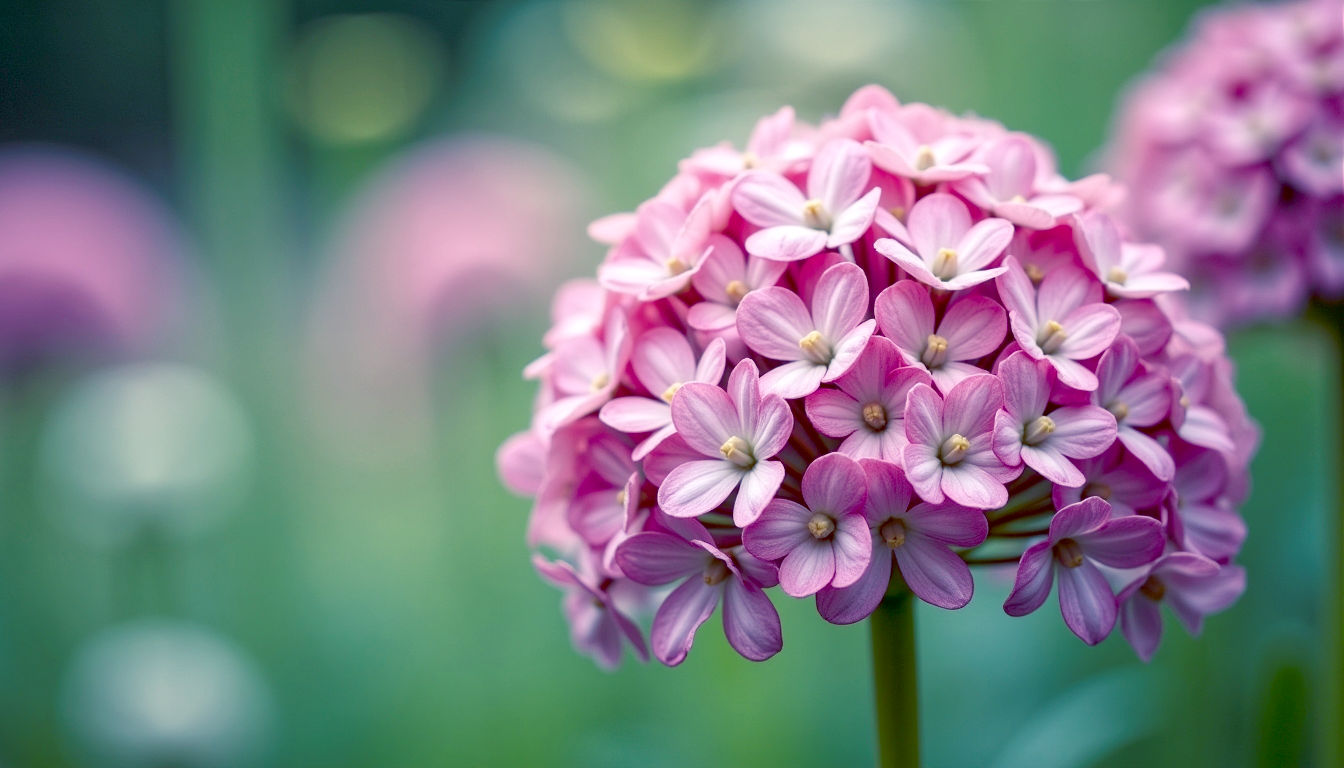
What is it?
Iberis, commonly known as Candytuft, is a classic cottage garden plant. It’s a low-growing, spreading plant that becomes completely covered in dense, flattened clusters of brilliant white flowers in late spring and early summer. The name ‘Candytuft’ is thought to come from Candia, the old name for Crete, where one of the species is from.
A Bit of History and a British Connection
Candytuft has been a favourite in British gardens for centuries, prized for its reliability and its usefulness as an edging plant for borders. Its crisp white flowers look fantastic alongside other traditional cottage garden plants like lavender, pinks, and catmint. It’s a simple, unfussy plant that embodies a classic, timeless style of gardening.
How to Spot It
- Form: It forms a low, sprawling mat of foliage. The evergreen perennial types (Iberis sempervirens) are the most popular.
- Leaves: The leaves are small, narrow, and a dark, glossy green.
- Flowers: The flowers are tiny and packed together into tight, dome-like heads. They are almost always pure, brilliant white, which really stands out in the garden.
Growing in Your British Garden
Candytuft is one of the easiest and most rewarding plants to grow. It’s perfect for the front of a sunny border, tumbling over a low wall, or in a rock garden.
- Position: It must have full sun. It won’t flower well in the shade.
- Soil: It needs well-drained soil. It hates sitting in wet, boggy ground, especially in winter. It’s perfect for sandy or chalky soils.
- Care: It’s very low-maintenance. After it has finished flowering in early summer, give it a light trim with shears to remove the dead flower heads. This will keep the plant neat and compact.
6. Ipomoea (Morning Glory)
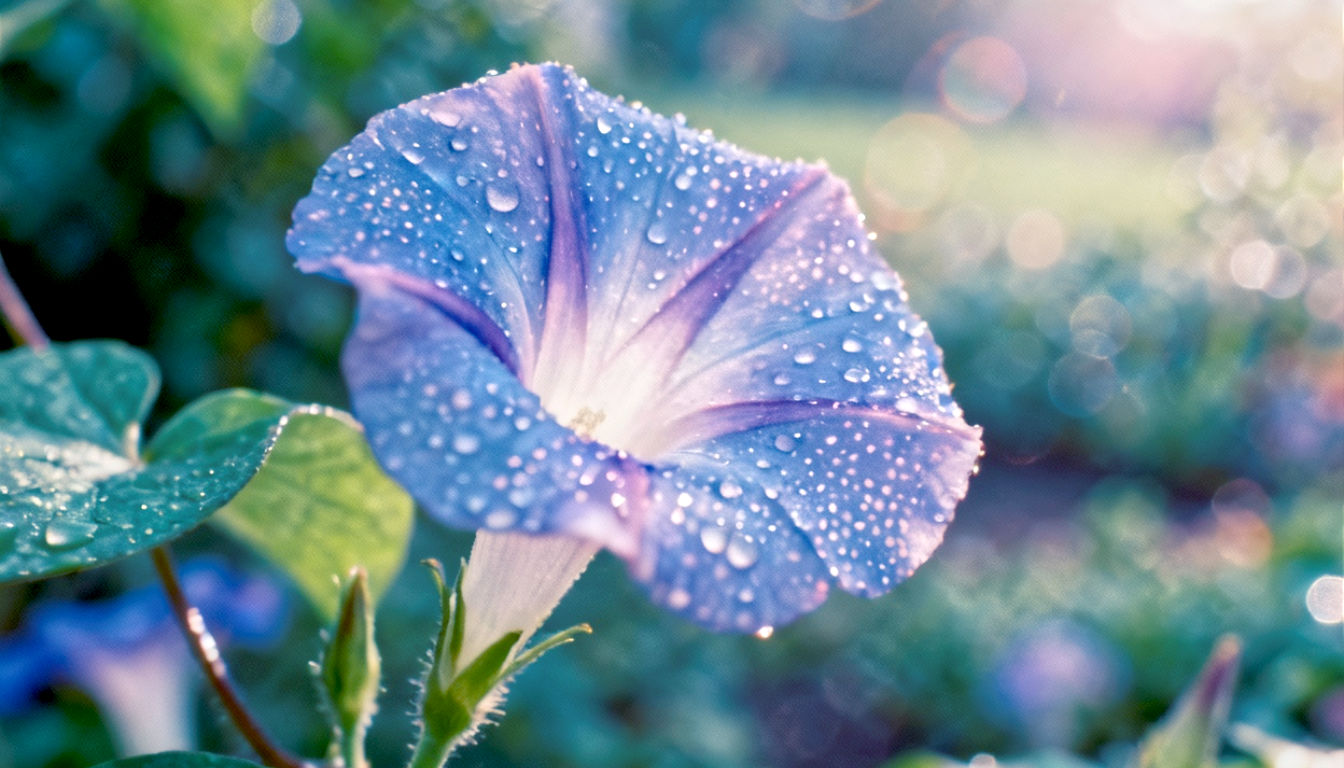
What is it?
Ipomoea, better known as Morning Glory, is a spectacular and fast-growing climbing plant. In the UK, we treat it as an annual, growing it from seed each spring to provide a stunning display throughout the summer. It eagerly twines its way up any support you can give it—a trellis, fence, or archway—and covers itself in a profusion of silky, trumpet-shaped flowers. The classic ‘Heavenly Blue’ variety is famous for its breathtaking, pure sky-blue flowers.
A Bit of History and a British Connection
Morning Glory is a beloved staple of the classic British cottage garden. For generations, gardeners have used it to quickly cover bare structures with lush foliage and beautiful blooms in a single season. It’s the epitome of cheerful, cheap, and easy summer colour, grown from a simple packet of seeds.
How to Spot It
- Form: A vigorous twining climber that can easily reach 2-3 metres (6-10 feet) in a summer.
- Leaves: The leaves are typically a fresh green and are heart-shaped.
- Flowers: The flowers are the main attraction. They are large, trumpet-shaped, and come in shades of intense blue, purple, pink, and white. As the name suggests, they open in the morning sun and will often close up by late afternoon, with a fresh batch of flowers opening the next day.
Growing in Your British Garden
Growing Morning Glory is a rewarding summer project.
- Sowing: The seeds have a hard coat, so soaking them in water overnight before planting really helps them to germinate. Sow them indoors in pots in spring, or directly into the ground after the last frost.
- Position: It needs a warm, sunny, and sheltered spot to give its best performance.
- Support: You must provide some form of support for it to climb, like a trellis, netting, or a wigwam of canes.
7. Inula (Elecampane)
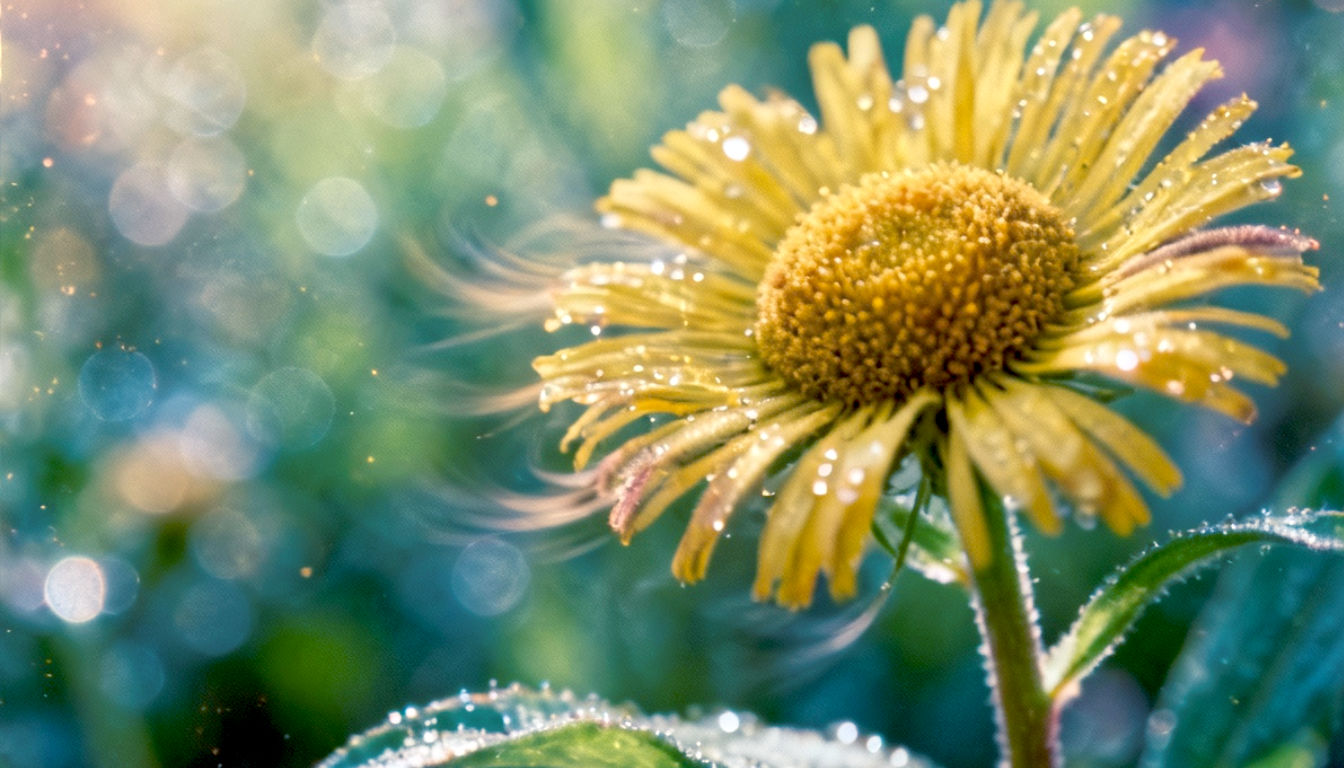
What is it?
Now for something a bit wilder. Inula, particularly Elecampane (Inula helenium), is a big, bold, and dramatic perennial plant. It’s a giant, growing up to 2 metres (6-7 feet) tall, with enormous, velvety leaves and large, sunflower-like yellow flowers in mid-summer. It’s not a plant for a tiny garden, but if you have the space, it makes a real statement.
A Bit of History and a British Connection
Elecampane has been grown in Britain for thousands of years, not for its looks, but for its medicinal properties. Its thick roots were a key ingredient in traditional remedies for coughs and chest complaints—it was the original cough sweet! Monks grew it in their monastery gardens, and it was widely used in potions and tonics right up until the 20th century. Its name is a corruption of the Latin phrase “enia campana”, meaning “field-healing”.
How to Spot It
- Size: The first thing you’ll notice is its sheer size. This is a big plant.
- Leaves: The leaves at the base of the plant can be huge, up to 50cm long. They are oval-shaped and covered in soft, downy hairs, giving them a grey-green appearance.
- Flowers: In summer, it sends up tall stems topped with large, shaggy, daisy-like flowers with many thin, bright yellow petals around a darker central disc.
Growing in Your British Garden
Elecampane is perfect for the back of a large border, a wild garden, or a damp meadow area.
- Position: It prefers a spot in full sun.
- Soil: It needs deep, moist soil to support its large size. It won’t be happy in very dry, poor soil.
- Wildlife: Bees and butterflies absolutely love its flowers, making it a great choice for a wildlife-friendly garden.
8. Itea (Sweetspire)
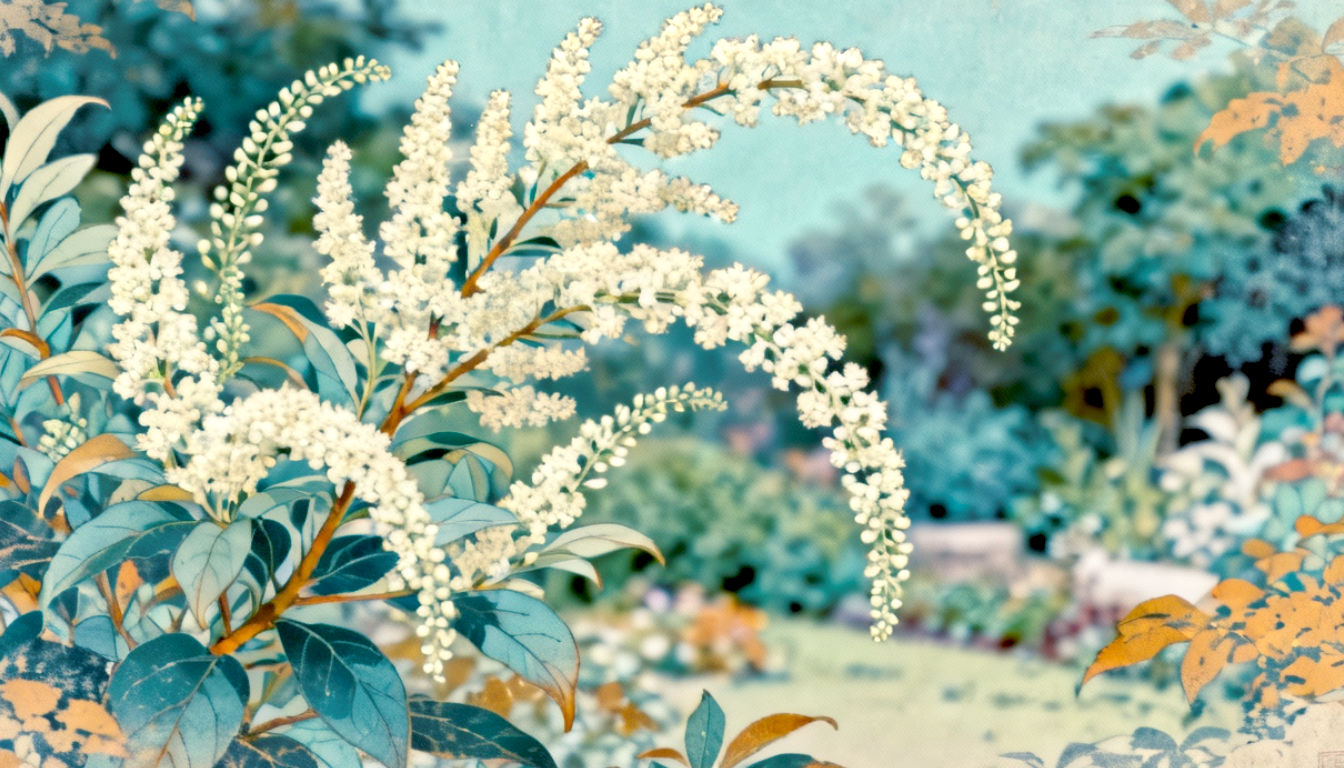
What is it?
Itea, or Sweetspire, is a more unusual shrub that deserves to be more widely grown. The most common one you’ll see is Virginia Sweetspire (Itea virginica), but the evergreen Holly-leaved Sweetspire (Itea ilicifolia) is a real gem for British gardens. It’s an elegant, arching evergreen shrub with glossy, holly-like (but not too prickly) leaves.
A Bit of History and a British Connection
Discovered in China by Western plant hunters in the 19th century, Itea ilicifolia was brought back to the UK and quickly gained admirers for its unique flowers and year-round structure. It holds a prestigious Award of Garden Merit from the Royal Horticultural Society (RHS), which is a reliable sign that it performs well in UK conditions.
How to Spot It
- Form: It forms a graceful, arching shrub, often growing up to 3 metres (10 feet) tall and wide.
- Leaves: The leaves are evergreen, glossy, and shaped like holly leaves, but they are usually softer to the touch.
- Flowers: Its main attraction appears in late summer. It produces long, drooping, catkin-like tassels (called racemes) of tiny, fragrant, greenish-white flowers. These can be up to 30cm long and look absolutely beautiful dripping from the branches.
Growing in Your British Garden
This is a great shrub for adding structure and late-summer interest to a sheltered spot.
- Position: It needs a sheltered spot to protect it from the coldest winds, such as against a wall or fence. It’s happy in sun or partial shade. A west-facing wall is often ideal.
- Soil: It will grow in most reasonable garden soils.
- Pruning: It doesn’t need much pruning. Just remove any dead or damaged branches in the spring.
9. Ipheion (Spring Starflower)
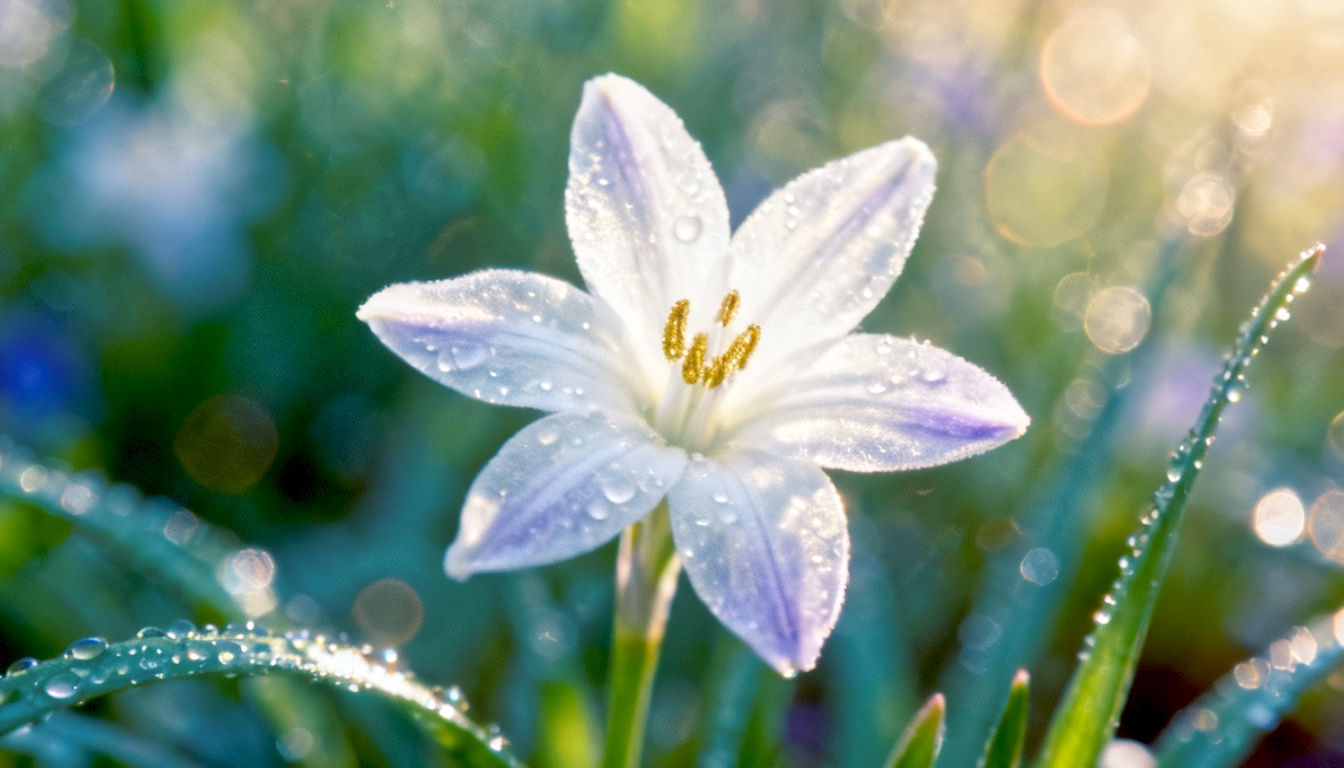
What is it?
Ipheion, the Spring Starflower, is a delightful little bulbous plant that pops up in early spring. It produces masses of delicate, star-shaped, honey-scented flowers on short stems above clumps of grassy leaves. It’s a subtle but beautiful plant that signals the end of winter.
A Bit of History and a British Connection
Originally from South America, Ipheion has made itself quite at home in British gardens. It’s a classic “pass-along” plant—gardeners often dig up a clump to share with friends and neighbours because it multiplies so easily. It’s often found in old, established gardens where it has been quietly spreading for decades, a testament to its toughness and reliability.
How to Spot It
- Leaves: The leaves appear in late winter and look like thin, floppy blades of grass. If you crush them, they have a faint oniony or garlicky smell.
- Flowers: The flowers are the real giveaway. They are star-shaped with six petals and come in shades of pale blue, violet, or white, usually with a darker stripe down the centre of each petal. The variety ‘Wisley Blue‘ is a particularly lovely pale blue.
Growing in Your British Garden
Spring Starflower is perfect for planting at the front of a border, in a rock garden, or for naturalising in a lawn or under trees.
- Planting: You plant the small bulbs in the autumn.
- Position: It needs a spot in full sun with well-drained soil. It will happily multiply year after year, forming a beautiful carpet of colour in spring.
- Care: It is completely trouble-free. The leaves die back and disappear by summer, and the plant sleeps until the following spring.
10. Idesia polycarpa (Igiri Tree)
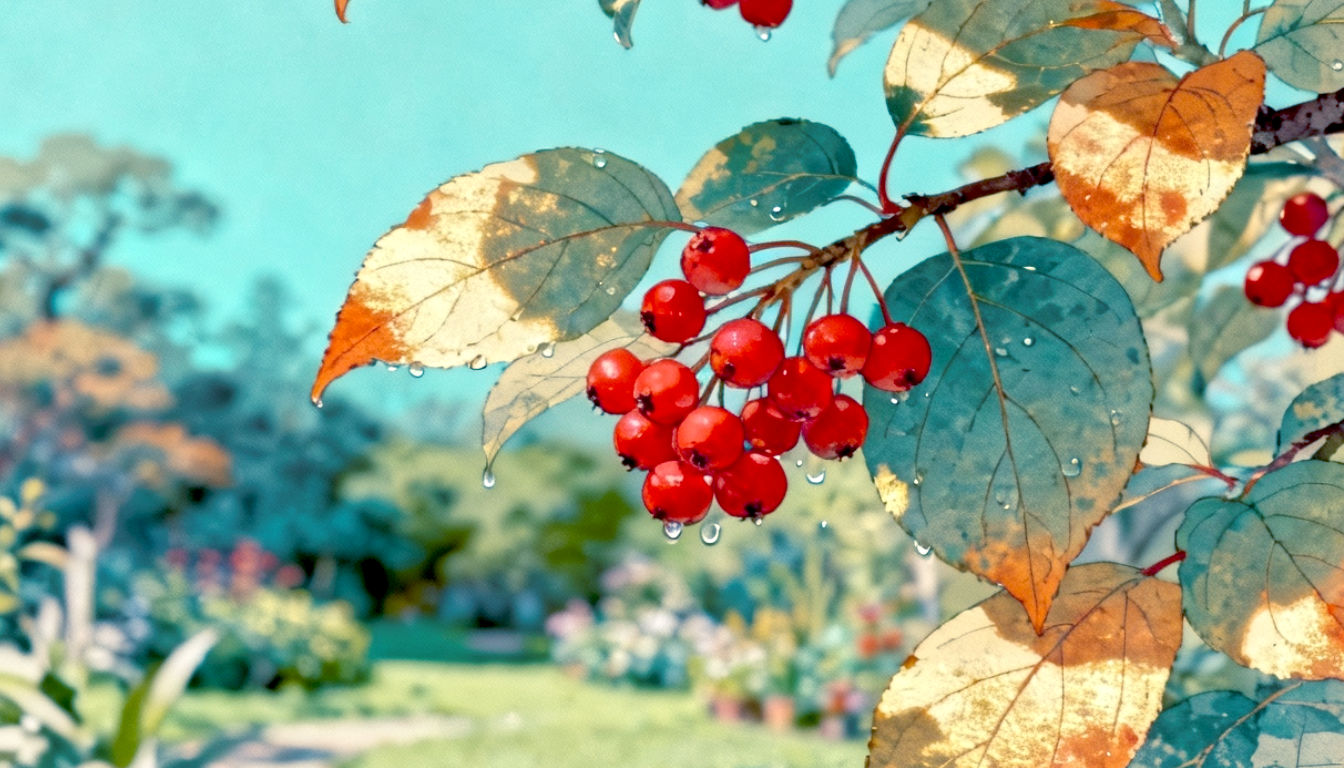
What is it?
Last but not least, a tree. The Igiri Tree (Idesia polycarpa) is a beautiful and unusual medium-sized tree from East Asia. It’s grown for its large, heart-shaped leaves and, most spectacularly, the huge bunches of bright red berries that hang from the female trees in autumn and winter.
A Bit of History and a British Connection
While not a common sight, the Igiri Tree is one of those special trees you might find in a botanical garden or a large private garden in the UK. It represents the adventurous spirit of British horticulture—the desire to grow beautiful and exotic plants from around the world. It’s a choice for the gardener who wants something a bit different from the usual rowan or cherry tree.
How to Spot It
- Leaves: The leaves are large and heart-shaped with reddish stalks. They turn a lovely buttery yellow in autumn before they fall.
- Flowers: In early summer, it produces sprays of fragrant, yellowish-green flowers. Like Holly, trees are either male or female.
- Berries: If you have a female tree and a male tree nearby to pollinate it, you will be rewarded with incredible hanging clusters of pea-sized, orange-red berries. They remain on the bare branches long after the leaves have fallen, looking stunning on a frosty winter’s day.
Growing in Your British Garden
This is a tree for someone with a bit of space who wants a real feature.
- Position: It needs a sunny, sheltered spot to thrive and to encourage the best berry production.
- Soil: It prefers fertile, well-drained soil.
- Size: It can eventually reach a height of around 10-15 metres (30-50 feet), so make sure you have room for it to mature.
In Conclusion
So there you have it—ten fantastic plants, all starting with the letter ‘I’. From the humble Ivy providing a lifeline to our wildlife, to the flashy Iris that brings a rainbow to our borders. The world of ‘I’ plants is far richer and more varied than you might have imagined. Hopefully, you’ve found some inspiration here to get out in the garden and try planting something new. After all, gardening is all about discovery, and there’s always another fascinating plant waiting just around the corner.
Further Reading:

